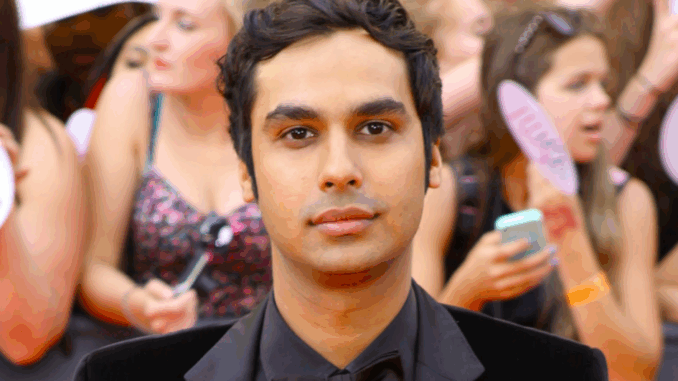
A Sitcom With Subtext
At first glance, The Big Bang Theory may appear to be a straightforward sitcom—light-hearted, filled with punchlines, and built on awkward social interactions. But beneath the geeky humor and pop culture references was a quieter, deeper undercurrent: an honest, if subtle, exploration of mental health.
From anxiety and social phobia to obsessive behaviors and emotional trauma, the characters of The Big Bang Theory were more than just exaggerated personalities. They represented a spectrum of mental and emotional challenges rarely portrayed so consistently in mainstream television comedy.
Sheldon Cooper: A Study in Rigidity and Control
Sheldon Cooper became the face of the show—an eccentric genius whose brilliance was matched only by his inability to understand the nuances of human interaction. His strict routines, emotional detachment, sensory sensitivities, and reliance on rules painted a portrait that many viewers recognized as reflective of neurodivergence—particularly autism spectrum traits and obsessive-compulsive behaviors.
While the show never gave Sheldon a formal diagnosis, his character invited dialogue about how people cope with the world in different ways. Over the years, viewers with autism or OCD, or those who loved someone who did, found representation—however imperfect—in Sheldon’s structured life.
Importantly, the show never asked Sheldon to “change.” Growth came not from abandoning who he was, but from building trust and slowly expanding his emotional range through love and friendship.
Raj Koothrappali: The Battle With Social Anxiety
Raj’s selective mutism in the early seasons was treated as a comedic obstacle—he couldn’t talk to women unless he was drinking alcohol. But behind the laughs was a very real struggle with social anxiety and self-worth. As the seasons progressed, Raj’s loneliness became more prominent.
His journey was marked by self-discovery, therapy, and incremental improvements in confidence. He remained romantically challenged, but he no longer defined himself by his limitations. The show allowed Raj to be vulnerable, giving a voice—literally and metaphorically—to those battling social phobias.
Howard Wolowitz: Trauma Beneath the Jokes
Howard, with his sleazy pick-up lines and loud wardrobe, often provided the show’s most exaggerated comic relief. But his behavior masked deep issues rooted in abandonment and trauma. Raised by an overbearing mother after his father walked out, Howard’s clinginess and immature behavior were coping mechanisms.
His development over the series—especially after marrying Bernadette and becoming a father—revealed a man grappling with unresolved pain. One of the most poignant episodes centered on a letter from his long-lost father, forcing Howard to confront the hole that had shaped so much of his identity.
Penny and Leonard: Normalizing Therapy and Emotional Work
While Leonard dealt with parental pressure and feelings of inadequacy, Penny battled self-doubt, career uncertainty, and the fear of not being “smart enough” to fit in. Their relationship wasn’t a fairy tale—it was full of real emotional negotiations.
Their conversations often explored issues like jealousy, resentment, and ambition. And unlike many sitcom couples, they didn’t always resolve things in a single episode. Their ups and downs showed that emotional labor is part of a healthy, evolving relationship.
Amy Farrah Fowler and Bernadette Rostenkowski: Women With Layers

Amy and Bernadette brought two very different lenses to mental health. Amy, who initially mirrored Sheldon’s detachment, revealed a hunger for connection that had long been stifled by social exclusion. Her slow emergence into confidence—through friendship with Penny and Bernadette—was a beautiful example of healing through community.
Bernadette, on the other hand, showed the struggle of balancing a high-powered career with the pressures of motherhood. Her occasional explosions of frustration and her aggressive edge weren’t played as flaws—they were reminders that women, too, carry emotional weight that deserves acknowledgment.
Humor as a Coping Tool
What set The Big Bang Theory apart wasn’t that it had jokes about mental health—it was that mental health was often the subtext of the jokes. Whether it was Sheldon’s meltdown over a changed dinner schedule or Raj’s fear of rejection, laughter served as a lens through which viewers could engage with discomfort in a safe space.
The humor rarely came from cruelty. It came from familiarity. Everyone has quirks. Everyone has fears. The Big Bang Theory made those things funny—and human.
The Show’s Real-World Impact
Mental health professionals and fans alike have credited the show with helping normalize conversations around therapy, anxiety, and non-traditional relationships. It didn’t preach. It didn’t diagnose. But it gave viewers characters who were complex, flawed, and trying their best.
In doing so, it became more than a sitcom. It became a source of comfort.
Conclusion: The Quiet Bravery of Being Yourself
In a world that prizes charisma and coolness, The Big Bang Theory celebrated awkwardness, anxiety, and intellect. It reminded us that emotional growth is a journey, not a destination—and that friendship and love can be powerful tools in that journey.
By shining a comedic light on serious topics, the show opened doors. For laughter. For healing. And most importantly—for understanding.
